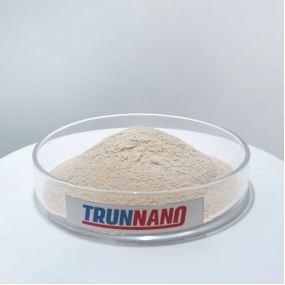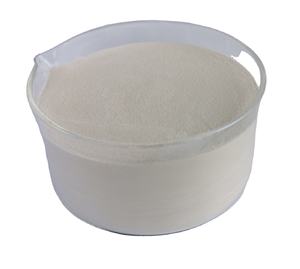Accelerating Innovation: The Role, Science, and Future of Concrete Early Strength Agents in Modern Construction concrete admixture
Intro to Concrete Early Toughness Representatives: Enabling Faster, Stronger Framework Development
Concrete very early toughness agents (ESAs) are chemical admixtures made to speed up the hydration procedure of concrete, making it possible for concrete to obtain mechanical strength at a significantly quicker rate during its first setup phases. In time-sensitive building tasks– such as bridge decks, passage linings, flight terminal runways, and skyscrapers– these representatives contribute in lowering formwork elimination times, accelerating building schedules, and enhancing job effectiveness. As global framework demands expand and sustainability ends up being significantly essential, early toughness representatives use a compelling remedy for enhancing both efficiency and material efficiency in modern concrete modern technology.
(Concrete Early Strength Agent)
Chemical Composition and Classification of Very Early Strength Brokers
Very early toughness agents can be generally classified into inorganic salts, natural substances, and composite kinds based upon their chemical nature. Typical inorganic ESAs include calcium chloride, salt nitrite, and salt sulfate, which advertise quick hydration by reducing the induction duration of concrete minerals. Organic ESAs, such as triethanolamine and formates, function by modifying the surface cost of concrete fragments and enhancing nucleation sites. Compound ESAs integrate numerous active components to maximize early-age performance while decreasing side effects like corrosion or delayed setup. Each kind supplies one-of-a-kind advantages depending on application demands, ecological conditions, and compatibility with other admixtures.
Mechanism of Action: How Early Stamina Agents Increase Concrete Efficiency
The essential mechanism of very early stamina representatives lies in their capacity to accelerate the hydration responses of tricalcium silicate (C3S) and dicalcium silicate (C2S), the primary constituents responsible for concrete stamina growth. By minimizing the induction period and boosting the rate of calcium silicate hydrate (C-S-H) gel development, ESAs make it possible for earlier tensing and setting of the cement paste. Additionally, some agents lower the freezing factor of pore water, making them especially efficient in cold-weather concreting. Advanced formulations additionally boost microstructure densification, bring about enhanced very early compressive toughness, reduced contraction, and improved resistance to environmental stressors.
Applications Throughout Building and Facilities Sectors
Very early strength representatives are important in a wide range of building circumstances where rapid strength gain is critical. In precast concrete manufacturing, they permit much shorter demolding cycles and raised production throughput. In winter months building and construction, ESAs prevent freeze damages by making it possible for very early frost resistance. Their use is additionally prevalent in emergency situation repair services, such as highway patching and railway track piece reconstruction, where quick return-to-service times are essential. Moreover, in high-performance concrete systems incorporating extra cementitious products like fly ash or slag, ESAs make up for slower early-age reactivity, ensuring structural readiness without compromising lasting toughness.
Market Patterns and Technological Developments
The market for very early toughness representatives is expanding in reaction to expanding need for fast-track construction and durable framework. Technological advancements have caused the development of non-chloride ESAs that prevent steel reinforcement corrosion, dealing with among the major limitations of standard chloride-based representatives. Innovations such as nano-enhanced ESAs and wise release systems are being explored to boost dose efficiency and control hydration kinetics. Furthermore, digital combination– through real-time tracking and predictive modeling– is improving the accuracy of ESA applications in complicated engineering environments. These fads show a wider change toward much safer, smarter, and a lot more sustainable construction methods.
Environmental and Toughness Difficulties
Despite their advantages, very early strength agents encounter challenges related to lasting durability and environmental effect. Chloride-containing ESAs, while affordable, present risks of strengthening steel rust if utilized improperly. Some natural ESAs may present unstable elements or change the setup actions unpredictably. From an environmental viewpoint, there is boosting analysis over the life-cycle effect of chemical admixtures, triggering research right into biodegradable and low-carbon alternatives. Additionally, improper dosage or conflict with other ingredients can lead to problems such as efflorescence, fracturing, or lowered life span. Addressing these concerns needs mindful formulation design, strenuous testing, and adherence to evolving governing standards.
Future Outlook: Towards Smart, Sustainable, and High-Performance Solutions
( Concrete Early Strength Agent)
Looking in advance, the development of early stamina agents will be driven by sustainability, efficiency optimization, and technical convergence. Advancements in nanotechnology are enabling the development of ultra-fine, very reactive ESAs that enhance early stamina without jeopardizing later-age residential or commercial properties. Environment-friendly chemistry approaches are promoting the production of bio-based accelerators originated from sustainable feedstocks, lining up with circular economic situation objectives. Assimilation with clever building and construction innovations– such as IoT-enabled healing sensing units and AI-driven admixture forecast models– will further improve using ESAs in vibrant structure atmospheres. As environment resilience and carbon reduction come to be main to infrastructure planning, very early strength agents will play a pivotal function in shaping the future generation of high-performance, swiftly deployable concrete services.
Distributor
Cabr-Concrete is a supplier under TRUNNANO of Concrete Admixture with over 12 years of experience in nano-building energy conservation and nanotechnology development. It accepts payment via Credit Card, T/T, West Union and Paypal. TRUNNANO will ship the goods to customers overseas through FedEx, DHL, by air, or by sea. If you are looking for concrete admixture, please feel free to contact us and send an inquiry. (sales@cabr-concrete.com)
Tags: Concrete Early Strength Agent, concrete, concrete addtives
All articles and pictures are from the Internet. If there are any copyright issues, please contact us in time to delete.
Inquiry us

